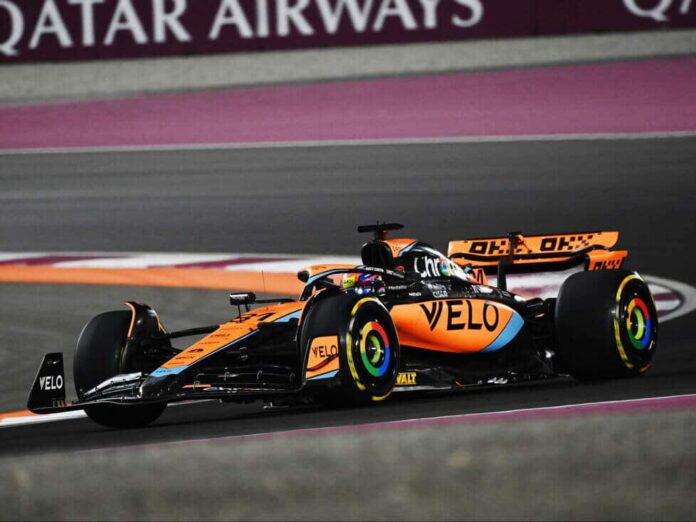McLaren is taking the next step towards sustainability and will be using recycled carbon fibre in part at Austin – anticipating more?
Formula One team McLaren will test the use of recycled carbon fibre at the next US Grand Prix in Austin, hoping to make a significant contribution to reducing CO2 emissions.
McLaren has teamed up with specialist company V Carbon to test the use of recycled carbon in its MCL60. The recycled material will initially be used for the advertising panels on the cockpit of the cars driven by Lando Norris and Oscar Piastri.
If the test in Austin is successful, McLaren plans to use the material for the remainder of the 2023 Formula One season to explore further use in future cars.
Carbon fibre has been a staple of Formula One cars for decades due to its favourable strength-to-weight ratio.
McLaren pioneered the use of carbon fibre in 1981 with the John Barnard-designed MP4/1, the first Formula One car to feature a carbon fibre composite monocoque. Carbon fibre reinforced polymers are also an essential part of the design of the latest commercial aircraft from Boeing and Airbus, among other engineering applications.
However, the use of carbon fibres also comes with environmental concerns, as demand is expected to double over the next decade. Studies show that about 30 per cent of carbon fibre is discarded as waste during the production process.
McLaren hopes that by exploring the use of recycled carbon fibre, it has taken the first step towards “developing a fully recyclable Formula One car by 2030” – a car that can be built from recycled materials.
Recycled carbon fibre on an F1 car! ♻️
Learn more about our pioneering developments as we try to make the car go faster on track while being more sustainable.
– McLaren (@McLarenF1) October 12, 2023
“We are proud to be pioneering sustainable materials in partnership with V Carbon and to be racing with recycled carbon fibre at the Austin GP,” said McLaren operations director Piers Thynne.
“The potential future applications of recycled carbon fibre are extremely exciting. V Carbon offers up to 85 per cent of the original strength of carbon fibre, making it strong enough for a wide range of applications in Formula 1 and beyond,” he says.
“We will continue to work closely with the FIA, Formula 1 and the other teams to accelerate change,” Thynne said.
Kim Wilson, McLaren’s director of sustainability, added: “Developing a fully environmentally friendly Formula One car is our big goal. We know that innovation in this area has the potential to make a big contribution to achieving our ambitious sustainability goals.”
“Using recycled carbon fibre in key parts of the Formula One car at this year’s US GP and analysing their performance on the track is an important step towards reducing the overall greenhouse gas emissions from the manufacture of our cars.”
McLaren’s initiative is part of Formula One’s efforts to reduce its carbon footprint to zero by 2030, as the production of Formula One cars is one of the largest contributors to a team’s emissions.
The team claims that recycled carbon fibre leads to a 90 per cent reduction in lifecycle emissions compared to standard carbon fibre.







